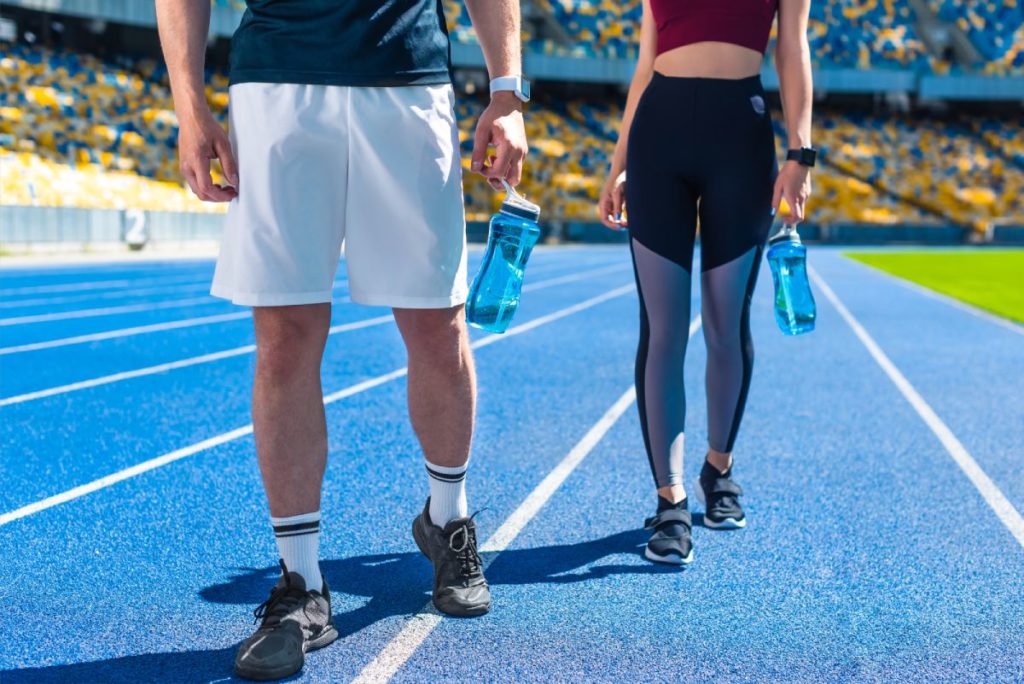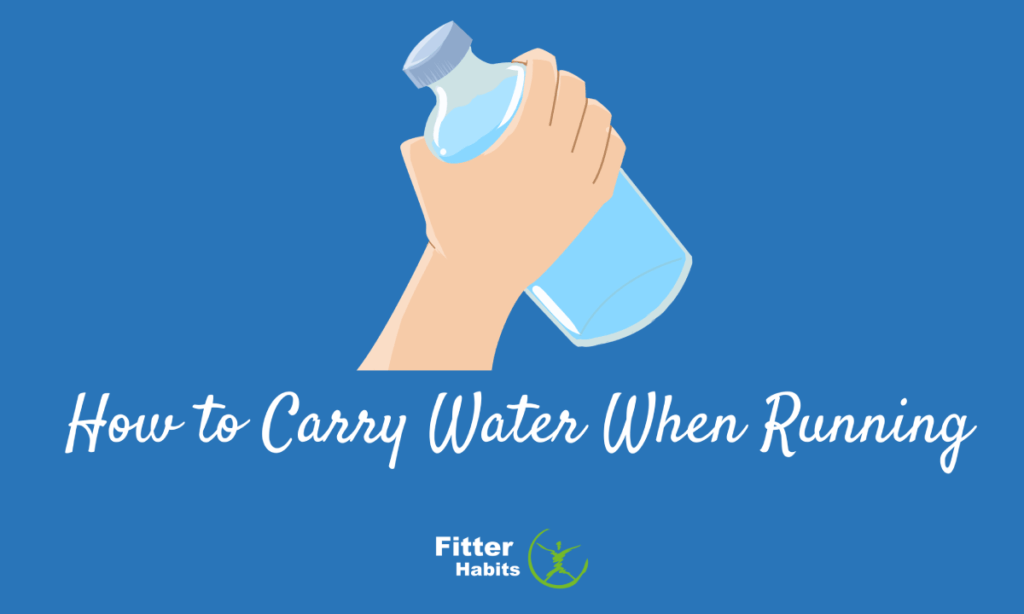No runner wants to lug liquids, even in a long race. Here are several ways on how to carry water when running.
Staying hydrated is essential for every runner on every run, even more for summer running, but hydration is usually the last thing runners consider.
Runners spend hours online finding race-friendly running clothes. They take time to break in their sneakers. They consult with trainers about their workout plans. But they fail to plan easy ways to carry water.
You might be one of the multitude of runners who cringe at the idea of toting a water bottle on a run. It’s a rare runner who likes the idea of carrying anything on a run.The alternative, however, since many public water fountains are closed due to the pandemic and won’t be quickly reopened even after restrictions are lifted, is to carry your own H2O.
We’ll show you the four best ways to carry water when you run in a moment. First, we want to make sure you understand how hydration works and how that affects your choice of water containers.
Contents
How Much Water Is Enough?
The International Olympic Committee has issued a statement on hydration for runners about 20 years ago
“Dehydration impairs performance in most events, and athletes should be well hydrated before exercise. Sufficient fluid should be consumed during exercise to limit dehydration to less than about 2% of body mass.
Sodium should be included when sweat losses are high, especially if exercise lasts more than about 2 hours. Athletes should not drink so much that they gain weight during exercise. During recovery from exercise, rehydration should include replacement of both water and salts lost in sweat.” are
So, if you are in the Olympics, it should be OK to sweat away 3 pounds off your 150-pound body during a long summer race. But if you are reading this article, chances are that you aren’t in the next Summer Olympics.
It only takes a pound or so of weight loss to get you into serious trouble on a summer run. A pound of water is about a pint, or 500 ml. That doesn’t mean that you only need a pint of water to run a race, but it does mean that your water intake needs to keep up with the fluid and salt you lose during perspiration to the nearest 500 ml or so.
Make Sure You Know These Important Facts About Hydration
Here are some important things about hydration for runners you probably didn’t know:
- Hydration capacity is just as important in cold weather as it is in hot weather. You can sweat a lot under cold-weather gear, but your cold surroundings don’t give you as many cues to realize that you are thirsty.
- Running at a high altitude increases the amount of fluid you need to stay hydrated.
- It’s also important not to over-hydrate. Drinking too much water lowers your sodium levels and can cause severe fatigue. That’s why it’s best to include electrolyte drinks in your hydration plan.
Don’t neglect hydration! Now let’s look at four ways to stay hydrated on your run with their pros and cons.
Lumbar Belts and Lumbar Packs

If your primary concern about carrying water when you run is maintaining good form, consider buying a lumbar belt or a lumbar pack (they may be labeled as a waist belt or a waist pack) to stay hydrated on the trail or on the road. Lumbar hydration packs place the weight of the water and the container on the center of the small of your back.
It’s the best place to add weight without noticeably moving your center of balance. Lumbar belts and packs also have compartments for storing snacks, your hydration pack, gels, and sunscreen.
What’s not to love about a waist belt or a waist pack? It can be awkward to reach around to get your water while you run.
Running Vests

If fanny packs for runners aren’t your jam, consider a running vest. A running vest is like a backpack for runners, except it distributes weight around your entire core, and it’s designed to be aerodynamically streamlined.
A running vest must be (1) lightweight, not holding you down and (2) close to your body, so it doesn’t generate drag. Hydration vests balance the weight of the water you carry around your body so you don’t have problems with balance and form. Just be sure you take a test run in your running vest before you wear it for a long-distance run so you avoid chafing.
In considering the pros and cons of running vests, keep in mind that you don’t want anything that traps heat against your body for hot-weather runs.
Handheld Bottles

We saved the simplest but most controversial way of carrying water on your run for last. Some trainers will tell you that holding one water bottle will throw you off your form. The answer to that problem is holding one water bottle in each hand or swapping the bottle between hands every mile or two as you run.
Patrick Carron, who holds the record for fastest 100 miles run by a 19- or 20-year-old, told Runner’s World that handheld bottles don’t make a difference in form or speed in races of less than two hours. He also recommends a soft flask, because it is easier to stow away.
Final Word on How to Carry Water When Running
It’s important to remember that different runners in the same race can have very different hydration needs. You will need experience running long races before you get a good feel for how much fluid your body will sweat away on different distances at different temperatures.
Winners need water. Don’t limit yourself to just one way to carry water while running. Try different containers for different ways to carry water in different conditions and have a full range of hydration gear for optimal performance on every long run.



